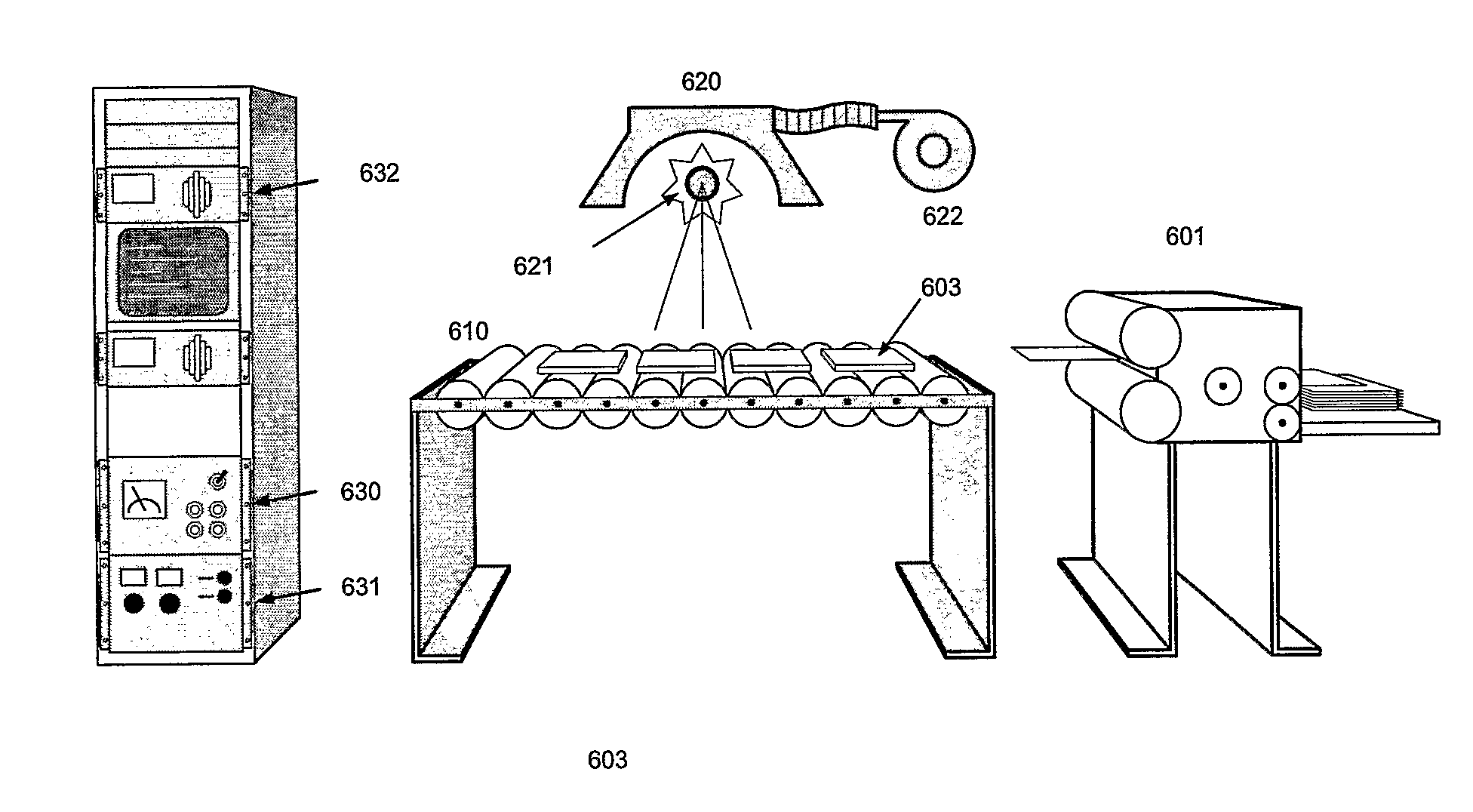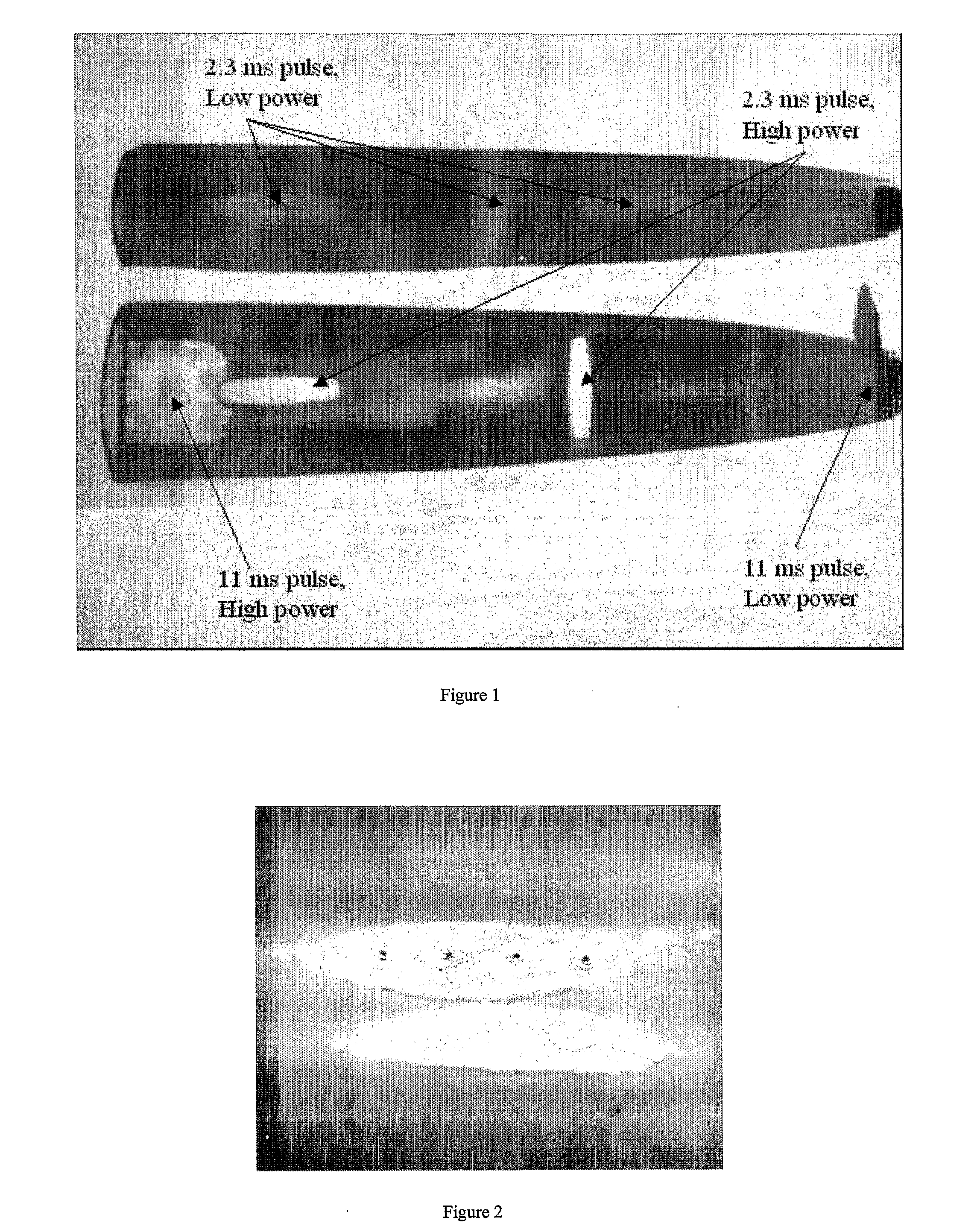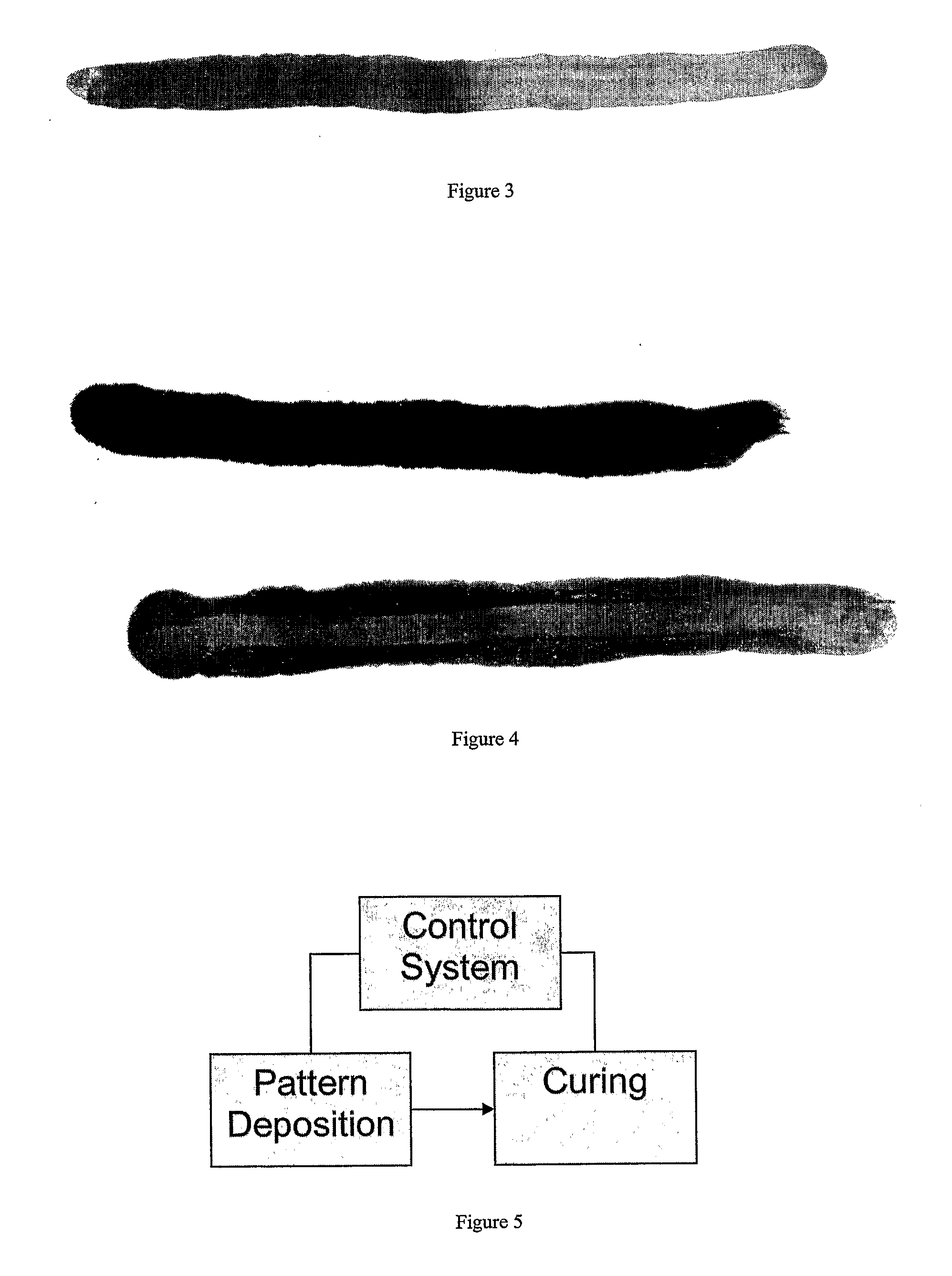Electrical, Plating And Catalytic Uses Of Metal Nanomaterial Compositions
a technology of nanomaterials and compositions, applied in the field of nanomaterial compositions, can solve the problems of many lower cost or flexible substrates such as cellulose (paper), polyethylene, polyester and many other plastics not being able to withstand elevated temperatures, and other components on the substrate, such as organic semiconductors, may also decompose at elevated temperatures, so as to achieve poor thermal conductivity, reduce the effect of electromagnetic radiation absorption
- Summary
- Abstract
- Description
- Claims
- Application Information
AI Technical Summary
Benefits of technology
Problems solved by technology
Method used
Image
Examples
example 1
[0031] Ambient temperature cure silver ink. The ink is comprised of the following components:
[0032] Nano Ag Particle Dispersion for Ambient Cure:
Ag nano particles (25-150 nm BET)15-45gDeionied Water85-65gZirconia Milling Beads 0.1-1.2 mm100-150gMix with Gyroscopic Mixing action30-120minutes
[0033] The ink was drawn down on Epson Photo Quality paper with a #10 wire wound rod (1.0 mil wet) to achieve a 0.09 mil (2.3 micron) dry film thickness. Conductivity as shown in Table 1A is achieved within 10-30 minutes.
TABLE 1A Conductivity of Ag dispersion on porous substratesuch as paper, gloss paper and photo papermicroohm-cmohm / □ohm / □ / milRho Film / Bulk18.060.080.0111.28
[0034] This method was applied to other non-porous substrates such as PET, however conductivity was not obtained, as illustrated in Table 1B.
TABLE 1B Conductivity on Non-porous substrates:microohm-cmohm / □ohm / □ / milRho Film / BulkOpen CircuitOCOCOC
[0035] To address this conductivity issue of coating on non-porous substrates ...
example 2
[0036] The process can be improved by applying low temperature, much lower than 700° C., which is currently required to sinter flake silver. Results from this embodiment on Mylar are illustrated by Example 2 shown in tables 2A-2C.
TABLE 2AFormulations of Ag in Isopropyl Alcoholwith small amounts of Hydrochloric acid.Formulation31-9031-9131-9231-9331-94Ag 30ST3 (g)6.486.516.556.586.61IPA (g)12.9713.0313.0913.1613.22HCI (28%) (g)0.550.460.360.260.17Total (g)20.0020.0020.0020.0020.00Milling Beads20.0020.0020.0020.0020.00
[0037]
TABLE 2B Typical Particle size data on the Horbia 910.Horiba 910EXP 31-94Particle Size SLSnmD10135D50270D90511D95603D951140
[0038]
TABLE 2CConductivity of Ag in Isopropyl Alcohol withsmall amounts of Hydrochloric acid on PETSheetSheetResistivityResistanceResistanceRho_film / % AcidThickness(microOhm-(Ohms / (Ohms / Rho_bulkSample(HCI)(mils)cm)square)square / mil)Ratio31-90-avg2.800.0173200075001.3E+02˜2000031-91-avg2.300.043630.5822.5E−023931-92-avg1.800.046500.4232.0E−023...
example 3
[0043] Ambient cure silver paint was created using 1 g of 30 nm silver with 2% carbon content was poured into a vial containing 2 g of isopropanol and 0.25 g of 37% hydrochloric acid (remainder water). This mixture was shaken and sonicated in a bath for 30 seconds. A ¼″ wide artist brush was used to paint the dispersion onto a piece of photocopy paper or similar porous substrate. The trace painted was about 4 microns thick (when dry), a few inches long, and about 7 mm wide. The resistance of the trace immediately after application was greater than 20 megaohms (out of range on the ohmmeter). Over the next two to three minutes, the isoproponal and hydrochloric acid began to evaporate. During this time, the resistance monotonically went down to a few ohms per inch of trace. The conductivity came within 50% its final value 20 minutes after application; and the resistance continued to drop down to about 0.6 ohms per inch of trace over a period of several hours. This corresponded to a res...
PUM
| Property | Measurement | Unit |
|---|---|---|
| Length | aaaaa | aaaaa |
| Length | aaaaa | aaaaa |
| Time | aaaaa | aaaaa |
Abstract
Description
Claims
Application Information
 Login to View More
Login to View More - R&D
- Intellectual Property
- Life Sciences
- Materials
- Tech Scout
- Unparalleled Data Quality
- Higher Quality Content
- 60% Fewer Hallucinations
Browse by: Latest US Patents, China's latest patents, Technical Efficacy Thesaurus, Application Domain, Technology Topic, Popular Technical Reports.
© 2025 PatSnap. All rights reserved.Legal|Privacy policy|Modern Slavery Act Transparency Statement|Sitemap|About US| Contact US: help@patsnap.com



